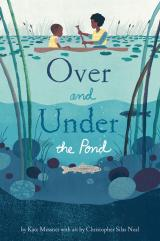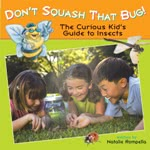This week’s challenge:
This week we are challenging children to explore the biodiversity present in their backyards and neighbourhoods.
This special challenge is part of Brampton Library’s celebration of Science Literacy Week 2020! Complete the challenge and share your results on social media with @BramptonLibrary #kidsatBL!
Watch the quick introductory video for this challenge:
Supplies you will need:
- Paper
- Something to write with
- A phone or digital camera*
*optional
The science behind this activity:
- Biodiversity means the variety of living things in an area
- We might talk about the biodiversity of the whole planet, a country, an ecosystem or a local area
- It is important for us to learn about biodiversity and be aware of the plants and animals in our ecosystems
- An ecosystem is a community of living organisms and their physical environment
- All species are connected to and rely on one another to survive. If we lose species, the ones that remain will be affected by that change
- If we add new species to an ecosystem, that will also have a major effect on the other species living there
- Scientists track the locations of where different species are seen to make sure that their populations are healthy and the diversity of species are supporting one another
- A lot of these tracking projects rely on citizen scientists — everyday people who contribute data (information about the species they see) to these tracking projects
- When a species’ population is too low, scientists and conservationists might identify that species as “at risk,” “vulnerable” or “endangered.” You can see a list of these species from the World Wildlife Fund here.
- If a species is identified as having too small a population, conservationists will make plans to try and support its growth.
- In this activity, we’re going to be citizen scientists and track the biodiversity of an area near us — you can stick to your backyard, go to a park near your home, or even just observe from a window while you stay inside!
Tips for today’s activity:
- Grab some paper and a pen, pencil or marker! It’s important for scientists to record their observations!
- Divide your page into 4 sections: trees, plants, animals, and insects/bugs
- Under each section, keep track of the different species and how many of each kind you see
- For example: under animals, you might have 4 squirrels and 1 hawk; under insects, you might have 20 ants and 4 bees; under trees, you might have 2 pine and 1 maple; under plants, you might have grass, 12 tulips, and 5 hydrangea bushes
- Use your phone or digital camera to take pictures of each of the species you see
- If you want to contribute to a citizen science project you can upload the photos you take to show your findings
- If you have a smartphone, you can also download an app to help you identify the species. There are lots of apps that will be able to name a species of plant or tree based on a photo you take of the leaves or bark
- The app and website iNaturalist is both an identification aid and a citizen science project!
- Check out a list of other great apps you can use from Ontario Parks here: http://www.ontarioparks.com/parksblog/citizen-science-apps/
- Extensions:
- Repeat this activity a week, a month, or several months later. Compare your recordings and make note of any differences you observe (make sure you write the dates of your observations on your paper!)
- Compare two different areas! Observe your yard, then a local park, then go to a conservation area. Do you notice a difference in the biodiversity of each place?
- Create a food web drawing or diagram including all the species you saw. If you need more information about what a certain species eats, try looking it up in World Book Kids, one of Brampton Library’s digital resources
- Keep the species in your neighbourhood safe and healthy by cleaning up any litter you see in your backyard or local park. Make sure you wear gloves and wash your hands as soon as you take them off!
If you liked this activity, keep building your science literacy with these free resources from our digital library:

Weird But True! Animals. 300 outrageous facts about wacky wildlife by National Geographic

The New Ocean: The Fate of Life in a Changing Sea by Bryn Barnard (non-fiction ebook available on CloudLibrary, recommended for children 5-10)

Over and Under the Pond by Kate Messner and Christopher Silass Neal (non-fiction ebook available on CloudLibrary, recommended for children 5-10 years)

Don't Squash That Bug by Natalie Rompella and Margo Burian (non-fiction video available on TumbleBooks, recommended for children 9-12 years)
Resources for grown-ups:
- Blog Post: “Why is Biodiversity Important?” (Ontario Parks)
- Blog Post: “Why is Biodiversity Important?” (Conservation International)
- Video and lesson: Food Chains and Food Webs Made Easy (Generation Genius)
- Blog Post: “Outdoor Science: Biodiversity for Kids” (Edventures with Kids)
- Blog Post: “Mostly Indoor Nature Studies” (Backyard Owls) — nature activities you can do without leaving your home!





 905-793-4636
905-793-4636